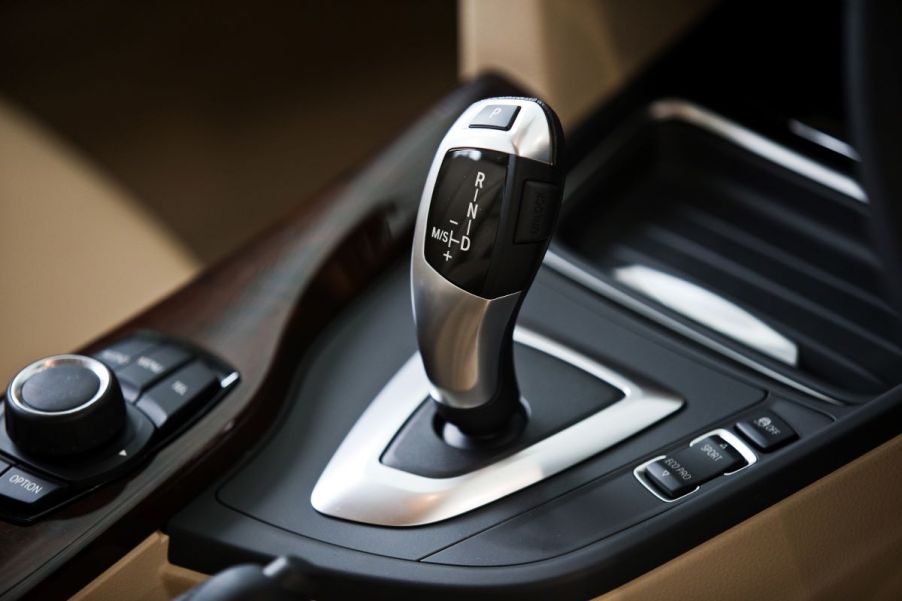
When Should You Repair, Rebuild, or Replace Your Transmission?
You’ll be thinking about the next steps when your transmission begins to slip out of gear, fail to engage, or make unfamiliar sounds. Transmissions are complicated boxes of gears. The average car owner probably doesn’t have the equipment to pull one from their vehicle. But there are things you can be aware of to understand the problem and the potential repairs.
Repairing, rebuilding, and replacing a transmission are incrementally serious benchmarks. Yet, that doesn’t necessarily mean each elevation is more expensive than the previous. Here’s what you need to know when your gearbox begins to fail.
Types of transmissions

Manual transmissions are the original gearbox variants. A driver-operated clutch pedal will control torque transfer from the engine to the transmission. Manually-shifting units will have fewer internal parts, which means more concentration is needed to operate them.
Automatic transmissions take the role of the driver-operator out of the equation. A vehicle’s electronic control unit (ECU) will do the work of shifting. Yet, there are many more components to these types of gearboxes.
Continuously variable automatic transmissions (CVTs) are effectively a “shiftless” gearbox, using a system of pulleys instead of gears. Although they mimic a limitless range of gears, they are quite complicated and routinely require more maintenance and repairs.
When to repair a transmission
General maintenance will ward off a lot of transmission issues. For example, you should ensure fluid levels are to the manufacturer’s recommendation, fluid flushing schedules are followed, and not engage in rough operation. Mechanics can easily fix surface issues like ECUs, solenoids, shifter cables, and mounting hardware. They will not require—in most cases—to drop the gearbox out of the car or open it to expose the internals.
Repairs like this often depend on the type of car and transmission. Nevertheless, the aforementioned parts should be relatively inexpensive. Labor requirements per vehicle will vary but expect at least $400 to $1,500, Mechanic Base says.
When to rebuild a transmission
If issues like a failing torque converter, broken shift plates, flex plates, flywheels, and gears arise, a rebuild may be needed. A mechanic will have to drop the transmission out of the car and take it entirely apart. This process involves many hours of labor. If the gearbox needs to be rebuilt, the cost can be anywhere from $1,500 to over $3,000, depending on the vehicle.
It’s only when the transmission is fully disassembled can a mechanic determine what the problem is. If they decide that there are too many issues to do a rebuild—like a cracked bell housing—it may need to be replaced. There’s no sense dropping more than $4,000 in parts and labor when a replacement gearbox can be obtained for less.
When to replace a transmission
Although it’s a significant vehicle repair, a replacement transmission can be worth it. Often, the other drivetrain systems can last beyond 200,000 miles. Therefore, if a gearbox fails around 100,000 miles, replacing them could be more economical than buying a new car. But you can hedge your bank account with options like a new, remanufactured, or refurbished transmission for your vehicle.
Brand-new transmissions are rarely necessary and are exceedingly expensive. Fortunately, a mechanic can refurbish a used transmission with parts pulled from a salvage yard. The least one may have to fork over is $1,500, and that’s not including more complex CVTs. But a refurbished transmission can cost $4,000 or more, depending on the vehicle. There shouldn’t be any gearbox issues once repaired, though.
Which makes the most economic sense?
Considering larger repairs and their damage to bank accounts is more based on the vehicle owner’s situation. It’s tough to dump thousands more in a vehicle that still isn’t paid off. However, selling a car for market value with a wonky transmission is basically impossible.
It’s a different story if the vehicle is paid off. While much is involved in the final equation to discern whether a transmission replacement, there’s one big tip. If replacing a transmission is less than a monthly car payment, it could serve you well.


